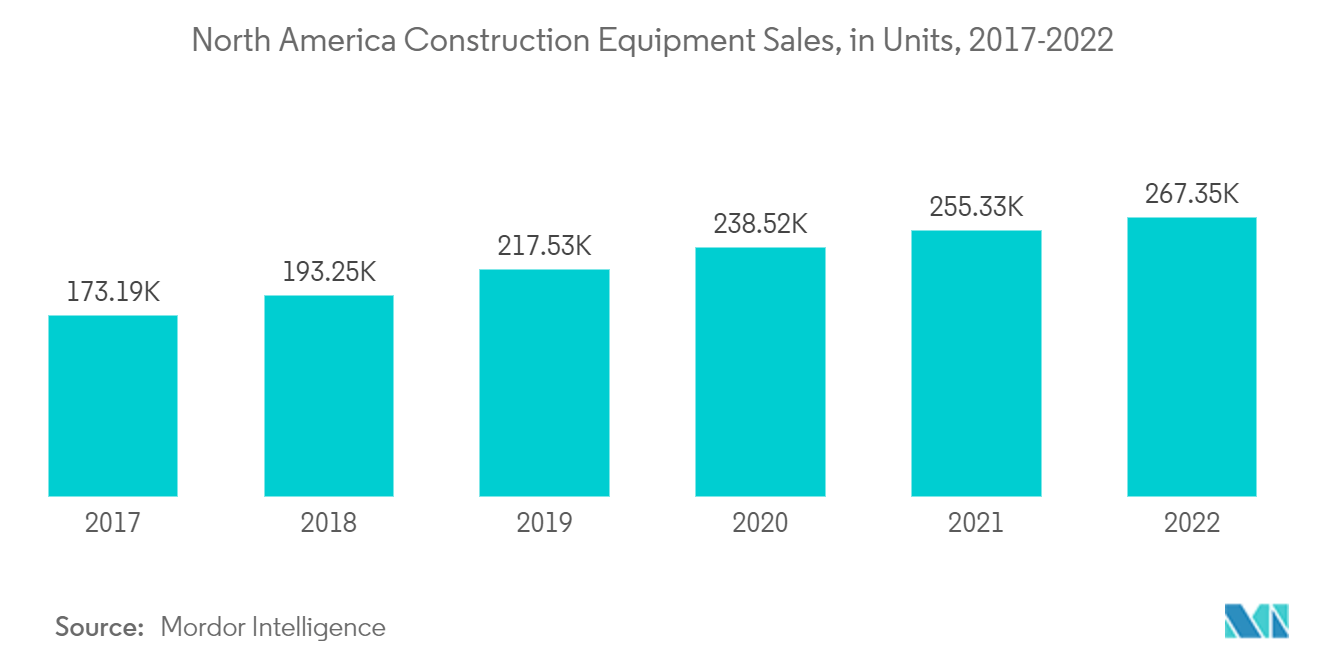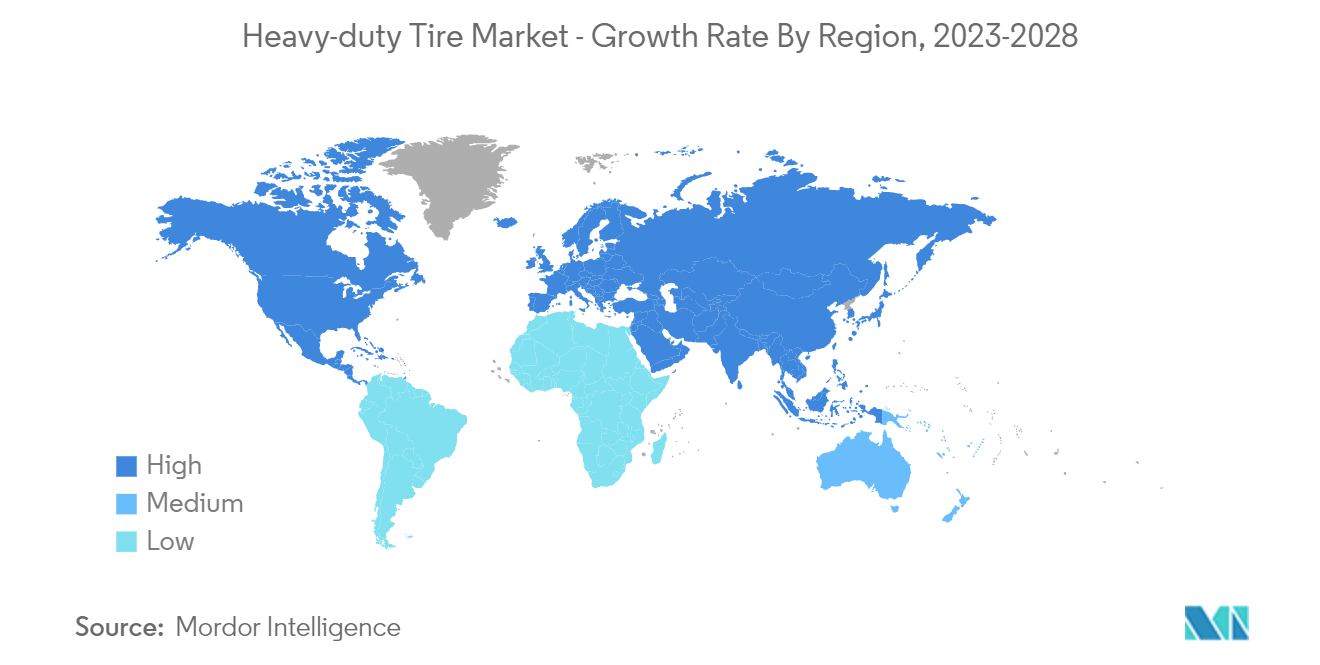Market Trends of Heavy Duty Tire Industry
This section covers the major market trends shaping the Heavy Duty Tire Market according to our research experts:
Construction Machinery Tires are Dominating Other Heavy-duty Tires
The demand for construction machinery, such as cranes, wheel loaders, bulldozers, motor graders, excavators, telescopic handlers, forklifts, and backhoes is predominantly being driven by the increasing volume of construction projects and expanding construction budgets, especially in developing countries across the globe over the last five years. This is driving the construction machinery tires market. Continued economic growth in a number of developed and developing nations, coupled with attractive financing conditions on the back of low interest rates, is expected to boost average global construction industry revenues, which will, in turn, propel the growth of the construction machinery market.
The market has trailed behind for the past two to three years due to the disproportionately low use of heavy-duty tyres in industries including small loaders, skid-steers, and backhoes. Additionally, a 5% increase in the construction industry is predicted, which is likely to positively affect the market growth for heavy-duty tyres over the course of the projected period. The market is expected to rise soon as a result of the improving economic situation and the increasing focus on mechanising agricultural activities. The need for tyre retreads for these vehicles has been growing as fleet managers and operators continue to adopt retread programmes to reduce operating expenses.

Asia-Pacific is Leading the Heavy-duty Tire Market
One of the major factors driving the growth of the market is the growing construction industry, especially in developing countries, owing to numerous growth opportunities in infrastructure, residential, and non-residential sectors. For instance, the rise in the construction of multi-family houses (with the growing trend of nuclear families), and increasing investments in the construction of roads, highways, smart cities, metros, bridges, and expressways due to growing population and urbanization.
The growing trend toward automation is expected to drive the growth of the market. However, factors, such as stringent emission regulations for construction machinery, are expected to hinder the growth of the market
The Asia-Pacific region is witnessing demand owing to the growing construction sector and infrastructural investments in countries, such as India and ASEAN Countries (such as Malaysia, Indonesia, Vietnam, Singapore).
The construction industry is highly dynamic, and numerous factors, such as overall economy, budgets, and global economic scenario, are influencing the market's growth. Volatility in these aspects affects the businesses of construction equipment OEMs, as well as construction rental equipment. This, in turn, is leading to price fluctuations of new, used, and rental equipment.
The ASEAN region holds significant opportunities for the growth in demand for construction machinery. With the prospects of large infrastructure projects and shifting labor dynamics, the construction equipment rental market is expected to witness growth post-2020 during the forecast period.
In the ASEAN countries, the construction sector is expected to grow at a rate of more than 6% post-2020. It is estimated that over the next five years, the combined value of all the mega-projects in the ASEAN region is expected to be valued at USD 2.9 trillion. Of this value, about USD 1.5 trillion is invested in the planning/pre-planning phase.
In addition, the investments in infrastructure, both, public and private, such as the Indonesian National Medium-term Development Plan (USD 460 billion), Vietnam Socio-Economic Development Plan (USD 61.5 billion), and the Philippine Development Plan 'Build, Build, and Build' (USD 71.8 billion), are expected to offer opportunities for construction equipment rentals.
Thus, construction equipment rental in these scenarios proves to be the preferable and effective choices for the construction companies, primarily to reduce or minimize the impact of unexpected financial downturns.
With continuous technological developments across the industry and the emission standards becoming more stringent, it is continually becoming a challenge for companies to provide standard-compliant machinery at affordable prices.
With commercial construction being the strongest performing sector, followed by house building and apartment building (owing to the growing rental markets in the region, along with the rising employment index), the region is expected to expand its construction industry. Furthermore, in cities, such as Sydney and Melbourne, strong government support, in terms of infrastructure investment, is aiding the construction of both commercial and residential properties.
Thus, due to the above-mentioned developments, the market studied is expected to grow at a slow and steady pace.


